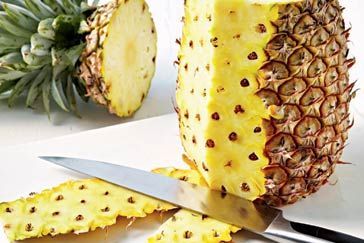Currently Empty: ₦0.00
“Eat the whole plant series” – Pineapple

This series encourages individuals to utilize every part of a plant, minimizing waste and maximizing nutritional benefits. In this installment, we focus on the versatile and tropical pineapple, exploring the delicious possibilities hidden not only in its succulent flesh but also in its often overlooked skin.

Pineapple Flesh
Pineapple flesh is celebrated for its sweet and tangy flavor, making it a popular ingredient in both sweet and savory dishes. Whether enjoyed fresh, or blended into smoothies, the vibrant taste of pineapple adds a burst of tropical sunshine to any meal. Rich in vitamin C, manganese, and antioxidants, the flesh of this tropical fruit offers a refreshing and nutritious boost to your diet.
Pineapple Skin
While many discard pineapple skins without a second thought, they actually contain valuable nutrients and flavors. The skin is rich in bromelain, an enzyme known for its anti-inflammatory and digestive benefits.
While the concentration of vitamins and minerals in pineapple skin may not be as high as in the flesh, it still provides notable amounts of essential nutrients. Pineapple skin contains vitamins such as vitamin C, which supports the immune system and promotes skin health, as well as minerals like manganese, important for bone formation and metabolism.
To incorporate this part of the fruit into your culinary adventures, consider making a pineapple-infused tea https://plantyou.com/pineapple-skin-tea/ or fermented pineapple https://www.youtube.com/watch?v=dRlPG-9Y9aw .This innovation not only minimize waste but also introduce a new dimension of flavor to your kitchen.
Embracing the “Eat the Whole Plant” philosophy with pineapple not only promotes sustainability but also unlocks a world of flavors and nutrients that would otherwise go unnoticed. So, the next time you enjoy a pineapple, think beyond the juicy flesh and consider the possibilities that lie within the often overlooked parts of this tropical gem.



